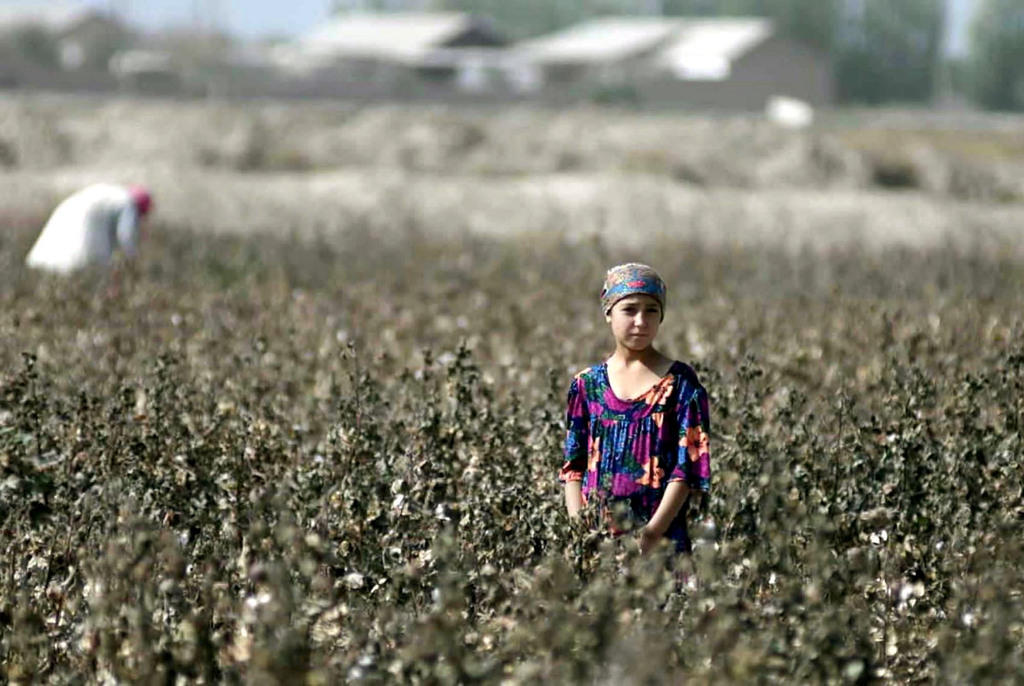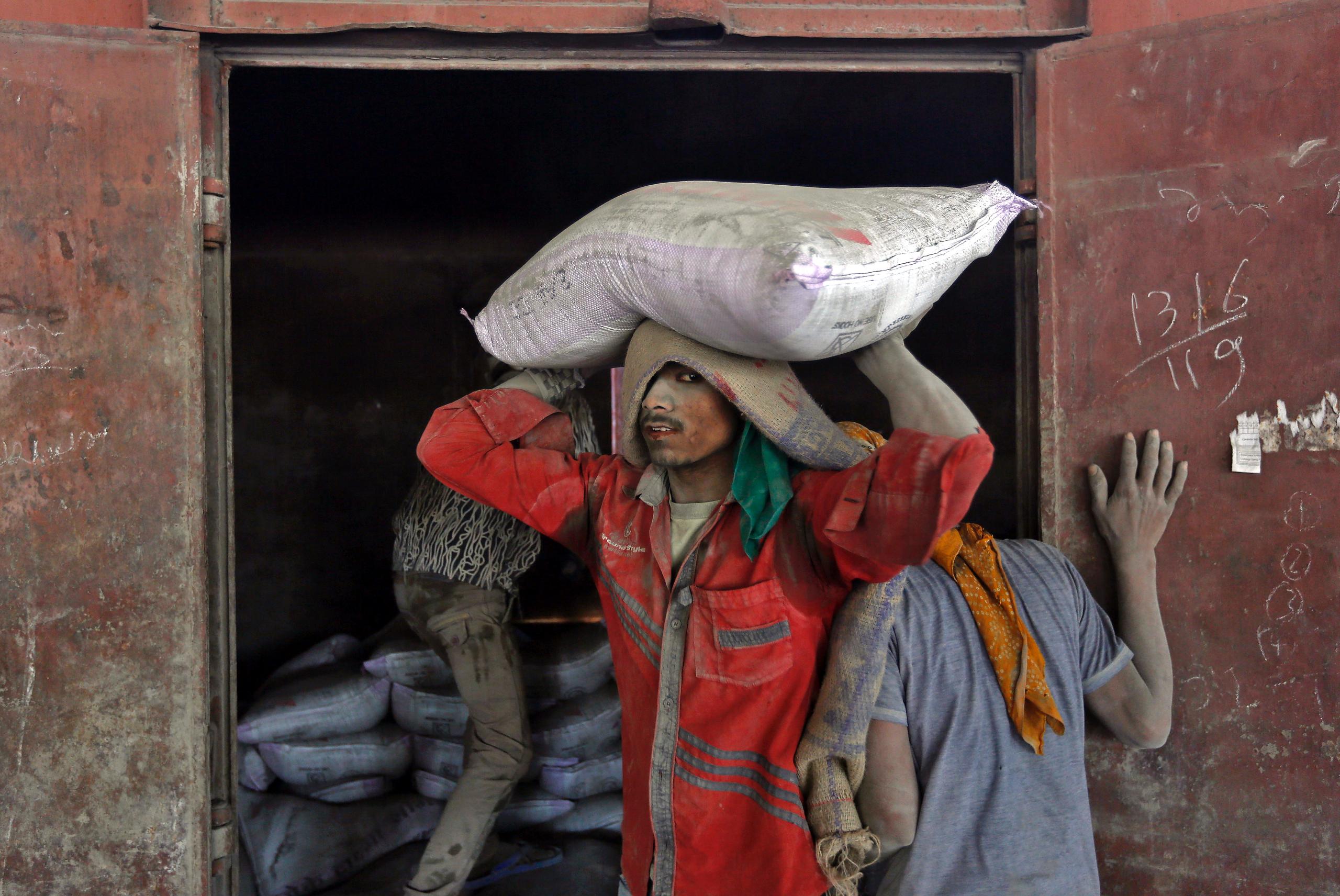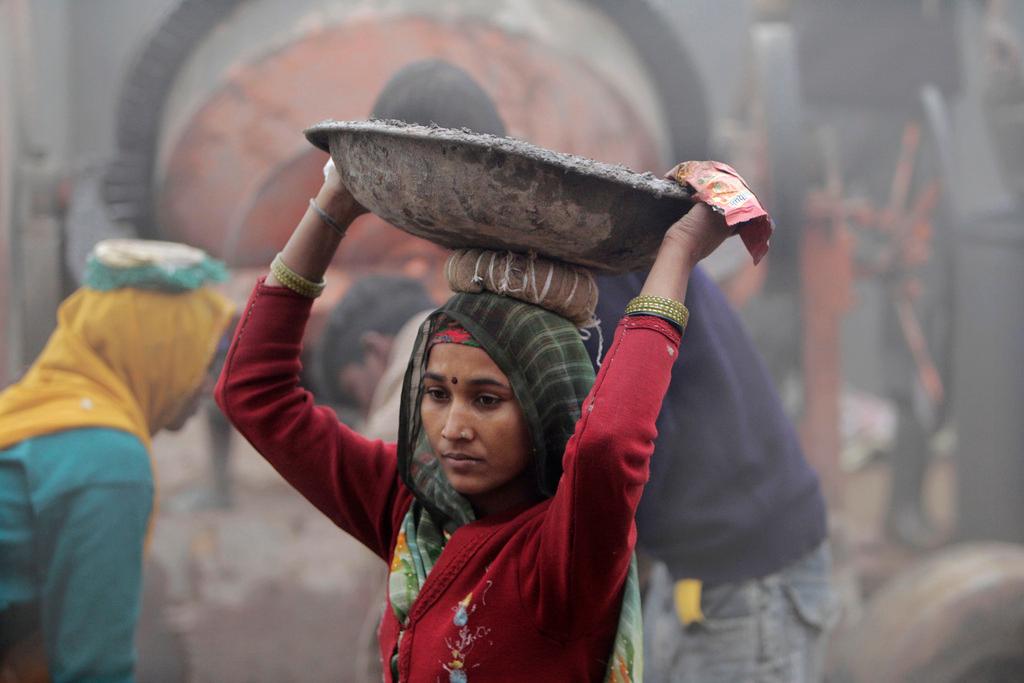The Swiss tourist who became an accidental activist in India

When photographer Karin Scheidegger wanted to take a few pictures for a friend on a trip to India, she was drawn into a labour movement that affected the course of her life and work.
“I never went searching for this story. It really found me,” Scheidegger told swissinfo.ch
Scheidegger first learned about Swiss cement company Holcim’s operations in India in 2012. It was the year when the Museum of Fine Arts in the Swiss capital Bern held a controversial exhibition to mark the company’s 100th anniversary.
“An advertising agency had prepared the concept. The exhibition was criticised by some as corporate advertising in a publicly financed arts space,” she recalls.
At the time, Scheidegger was planning a trip to India to meet a friend and help a Swiss NGO where she was working part-time. An acquaintance who had written a doctoral thesis on mining and transnational corporations asked her to take a few pictures of the villages near the cement factories. Scheidegger decided to spend one week of her five-week vacation taking photos and exploring the Durg and Baloda Bazar districts of Chhattisgarh in eastern India.
“I also wanted to be the kind of photographer who goes to exciting places and tells exciting stories. So it was a good opportunity for me,” says Scheidegger.

For years, the region’s contract workers had been calling for better working conditions and for the right to unionise, a fight which continues today. According to cases filed in Indian courts, some of them have been working for decades at the factories with no chance of ever getting a permanent contract or a full salary. They earned about a third of permanent workers’ salaries and are employed through third-party contractors who take a cut from their meagre wages. The cement plants embroiled in the labour dispute were initially owned by the Indian companies ACC Limited in Jamul and Ambuja Cement Limited in Rawan. (LafargeHolcim is a majority shareholder at Ambuja Cement which in turn is a majority shareholder at ACC).

Local immersion
When she got to India, Scheidegger managed to link up with local activists thanks to Swiss-based unions Unia and SOLIFONDS that had been supporting the workers’ campaign to negotiate their conditions with Holcim. However, Scheidegger did not know that the region was one of the most dangerous parts of the country. An armed rebellion by a group called Maoists and the government’s counter-terrorism campaign had resulted in hundreds being killed in the southern part of the state. Authorities were wary of protest movements and vested interests tried to stifle dissent by branding activists as Maoist sympathisers.
“There was quite a lot of naiveté from my side. I knew a bit about the conflict and that it was one of the most dangerous areas for journalists but I only thought of taking a few pictures in these villages,” says Scheidegger.

Her first experience of local paranoia and distrust was during a visit to a worker’s market in the industrial town of Bhilai. It is where labourers looking for work gathered in the morning in the hope of earning some money. As a foreigner, Scheidegger attracted a lot of attention. One woman was particularly keen on talking to her.
“An hour later the police came and questioned us on what we were doing there. Later on I was told that the woman was a Mukhbir or police informer.”
During her visit, Scheidegger was able to meet local activists, including some who were on the run because they had been criminalised for being union organisers.

Confrontation
On a lovely summer’s morning in Rawan village Scheidegger and her local contact Ajay T.G. set off at 6am on April 17, 2013 to take advantage of the soft morning light. The Swiss photographer wanted to take pictures of workers streaming in and out of the nearby Ambuja cement factory on their shifts. As her car went past the main gate of the Ambuja plant – in which Swiss-French cement giant LafargeHolcim owns a stake – a sign caught Scheidegger’s eye. It said said ‘Ambuja Cement heartily welcomes you for a safe and pleasant visit’. Scheidegger stepped out of the car to take a picture.
“I thought this was quite ironic because I knew of many deaths at the factory because contract workers do not get the same safety protection as regular employees,” Scheidegger said.

The contract workers’ uprising led the cement companies to heavily fortify their factories. When Scheidegger approached the gates of the Ambuja plant to photograph the sign, security guards asked her to move away. She says she didn’t know that she was standing in an invisible “no-go zone” designed to keep protesting villagers at bay.
So she and Ajay drove out of the village to take picture of a field with the factory in the background. The security guards, who had followed them, became aggressive and soon two other guards arrived on a motorbike. They started hitting Ajay.
“He got punched and his lip was bleeding and his shirt was ripped. I felt responsible as I was the one who took the pictures but the guards completely ignored me,” says Scheidegger.
After the incident, they went to the local police station to file a complaint against the guards. According to Scheidegger, the police were initially reluctant but cooperated when journalists, who got wind of the altercation, arrived at the police station. Scheidegger eventually appeared on a local TV channel, where she told her side of the story. The Swiss woman says that the police claimed she had been used by activists to draw attention to their cause. “It was never like that,” she insists.

When she complained to Holcim management in Switzerland, they upheld the security guards’ version of events, which claimed that Scheidegger and her companion had tried to climb the factory wall and enter the compound.
“The security asked the intruders to stop their intrusions activities. No violence was perpetrated,” said a letter from Holcim in May 2013 summarising the response of Ambuja factory management.
Scheidegger says that eventually Ajay was forced to withdraw his complaint so that the company would also withdraw their trespassing complaint against him.
“In the end it’s as if all this never happened,” says Scheidegger.
Denied entry
Despite the bad taste left by the clash with security guards, Scheidegger went back to India in 2014 and even took part in a march in Bhilai with the members of the worker’s union negotiating with Holcim (Pragatisheel Cement Shramik Sangh or PCSS). A picture of her at the march appeared in a newspaper report.
“I didn’t try to hide my presence nor did I feel that I should remain undetected in the area,” says Scheidegger.

Her activities did not go unnoticed by the authorities. When she left the state for a getaway in the Himalayas, she received phone calls from activists saying that the foreigners’ registration office in Delhi had called, asking about her. The police called the hotel where she had stayed and paid a visit to her friend who was listed as her contact person in the visa application.
In 2016, Scheidegger applied for a grant to follow up on her work documenting the labour movement in Chhattisgarh. With two weeks to go before her trip, she was contacted by the Indian embassy in Bern.
“They called me and said I could pick my passport up but there was no visa for me,” she says.
Scheidegger believes she was being punished for documenting what the authorities didn’t want people abroad to see. The Indian embassy in Switzerland did not respond to a request from swissinfo.ch to comment on the visa denial or a potential entry ban.
Magazine project
The inability to visit India was a big blow to Scheidegger. It also motivated her to do something with the photos she had taken on trips to Chhattisgarh. In September, she published a magazine in German called “Rich Lands Poor People” – a phrase commonly used by activists to refer to the dismal situation in Chhattisgarh.
“The idea behind it was to create a magazine like you’d find at the hairdresser’s when waiting for your appointment. It is visually very appealing but only when you start reading do you realise that the content is very serious,” she says.

After decades of struggle, the workers eventually scored a major victory. In 2016, an agreement was reached with LafargeHolcim over the fate of almost 1,000 temporary workers working at the Jamul cement plant in Chhattisgarh. But according to Scheidegger, labourers’ situation in neighbouring Rawal is still dire and the formation of unions is still actively discouraged. LafargeHolcim does not agree.
“This allegation is unfounded,” a company representative said by email: “The Bhatapara plant [in Rawan] already had a union – AITUC (All India Trade Union Congress) – which enjoyed the support of the workers. To date, the plant management has good relations with this union and engages in an open and fair dialogue.”
Despite being unable to visit India, Scheidegger is pleased that she could at least bring the stories she encountered to a wider audience.
“After my travels I realised that the project was not about Holcim at all but about the people that live in the vicinity of the factories,” she says.


In compliance with the JTI standards
More: SWI swissinfo.ch certified by the Journalism Trust Initiative















Join the conversation!